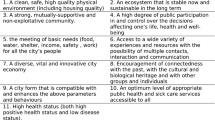Abstract
In this study, the usage of the level of service (LOS) concept, which was developed specifically for pedestrian satisfaction and safety, was critically analyzed. The focuses of this investigation were the Fruin and Highway Capacity Manual (HCM) LOS values, which were evaluated and compared in terms of their anthropometric dimensions. In this paper, new LOS values are proposed on the basis of the critical evaluation of the HCM and Fruin LOS values revealing the inconsistencies between the LOS values and the analysis. The importance of emptiness area in calculating human comfort and satisfaction in terms of the anthropometric dimensions and LOS value is also discussed. A software program called Laborer Image Analysis Software (LIAS) was developed to evaluate and compare the impacts of different body dimensions on the LOS values and on the space requirements for pedestrians. LIAS is presented as a facilitation tool for calculating more concise and effective emptiness areas and LOS values. The comfort area concept is also presented and discussed. This discussion is used to reveal the contrasts and inconsistencies in the existing usage of the LOS concept and to highlight the importance of the emptiness area approach. The paper presents a different perspective and discussion on the existing utilization of LOS levels, particularly for pedestrians in different structures. The research contributes to the LOS analysis discussion in terms of the anthropometric scale according to changing user profiles and develops facilitator(s) for analyzing and applying amendments to pedestrian needs, which can be used in transportation buildings.





Similar content being viewed by others
References
HCM (1965) Highway capacity manual. Transportation Research Board, Washington, DC
Fruin JJ (1971) Pedestrian planning and design. Metropolitan Association of Urban Designers and Environmental Planners Inc, New York
Fruin JJ (1970) Designing for pedestrians: a level of service concept. New York: Ann Arbor Mich
Fruin JJ (1970) Designing for pedestrians, a level of service concept. Polytechnic Institute of Brooklyn, PhD Dissertation
HCM (1985) Highway capacity manual. Transportation Research Board, Washington, DC
Goffman E (1971) Relations in public: micro-studies of the public order. Basic Books, New York
Seneviratne PN, Morral JF (1985) Level of service on pedestrian facilities. Transp Q 39(1):109–123
Sarkar S (1993) Determination of service levels for pedestrians, with european examples. Transp Res Rec 1405:35–42
Sarkar S (1995) Evaluation of safety for pedestrians at macro and microlevels in urban areas. Transp Res Rec 1502:105–118
Mori M, Tsukaguchi H (1987) New method for evaluation for level of service in pedestrian facilities. Transp Res A 21(3):223–234
Gerilla GP, Hokao K, Takeyama Y (1995) Proposed level of service standards for walkways in Metro Manila. J East Asia Soc Transp Stud 1:1041–1060
Khisty CJ (1994) Evaluation of pedestrian facilities: beyond the level of service concept. Transp Res Rec 1438:45–50
Henson C (2000) Levels of service for pedestrians. Inst Transp Eng J 70(9):26–30
Lam WHK, Lee JYS (2001) A study of levels of service for signalized crosswalk in Hong Kong Urban Areas. J East Asia Soc Transp Stud 4(1):27–40
HCM (2000) Highway capacity manual. Transportation Research Board, Washington, DC
Lee JYS, Goh PK, Lam WHK (2005) New level of service standard for signalized crosswalks with bi-directional pedestrian flows. J Transp Eng 131(12):957–960
Erkan İ, Hastemoglu H (2015) Building evacuate module for urban underground passages: subway station in Turkey. J Transp Technol 5(01):1
Hostovsky C, Wakefield S, Hall F (2004) Freeway users’ perceptions of quality of service: comparison of three groups. Transp Res Rec J Transp Res Board 1883:150–157
Helbing D, Johansson A (2010) Pedestrian, crowd and evacuation dynamics. Encycl Complex Syst Sci 16:6476–6495
Carreno M, Willis A, Stradling S (2002) Quality of service experienced by pedestrians in Edinburgh. Transport Research Institute, Napier University, Edinburgh
Muraleetharan T, Hagiwara T (2007) Overall level of service of urban walking environment and its influence on pedestrian route choice behavior: analysis of pedestrian travel in Sapporo, Japan. Transp Res Rec J Transp Res Board 2002(1):7–17. doi:10.3141/2002-02
Landis BW, Vattikuti VR, Ottenberg RM, McLeod DS, Guttenplan M (2001) Modeling the roadside walking environment: pedestrian level of service. Transp Res Rec 1773:82–88
Petritsch T, Landis B, McLeod P, Huang H, Challa S, Skaggs C, Vattikuti V (2006) Pedestrian level-of-service model for urban arterial facilities with sidewalks. Transp Res Rec J Transp Res Board 1982:84–89
Jensen S (2007) Pedestrian and bicyclist level of service on roadway segments. Transportation Research Record: Journal of the Transportation Research Board 2031:43–51
Sisiopiku V, Byrd J, Chittoor A (2007) Application of level-of-service methods for evaluation of operations at pedestrian facilities. Transp Res Rec J Transp Res Board 2002(1):117–124. doi:10.3141/2002-15
Virkler MR, Elayadath S (1994) Pedestrian speed-flow-density relationships. Transp Res Board 1438:51–58
Jaskiewicz F (1999) Pedestrian level of service based on trip quality. In: Proceedings from urban street symposium, Dallas
Mozer D (1994) Calculating multi-mode levels-of-service. International Bicycle Fund, Seattle
Dixon L (1996) Bicycle and pedestrian level-of-service performance measures and standards for congestion management systems. Transp Res Rec 1538:1–9
Himes JJ (1991) Anthropometric assessment of nutritional status. Wiley, Oxford
Harris MI, Flegal KM, Cowie CC, Eberhardt MS, Goldstein DE, Little RR, d-Holt DD (1998) Prevalence of diabetes, impaired fasting glucose, and impaired glucose tolerance in US adults: the Third National Health and Nutrition Examination Survey, 1988–1994. Diabetes Care 21(4):518–524
HCM (2010) Highway capacity manual. Transportation Research Board, Washington, DC
Pheasant S (1998) Bodyspace. Taylor and Francis, New York
Turkish Statistical Institute [TSI] (2000) Census of population, Ministry State Institute of Statistics
Preedy VR (2012) Handbook of anthropometry, physical measures of human form in health and disease. Springer, Berlin
Acknowledgments
The authors appreciate the support of the Research Science Foundation in Suleyman Demirel University about research project number is 2877-D-11.
Author information
Authors and Affiliations
Corresponding author
Rights and permissions
About this article
Cite this article
Erkan, İ., Hastemoglu, H.Ş. Analyzing Level of Service Through Anthropometric Scale and Its Contribution to Transportation Engineering. Int J Civ Eng 14, 585–593 (2016). https://doi.org/10.1007/s40999-016-0028-z
Received:
Revised:
Accepted:
Published:
Issue Date:
DOI: https://doi.org/10.1007/s40999-016-0028-z




